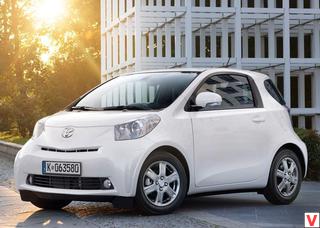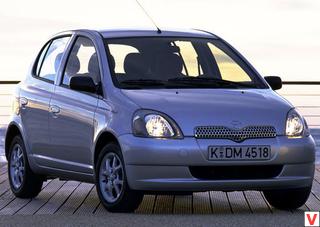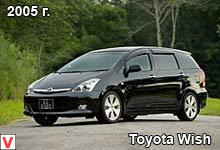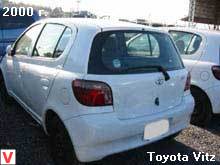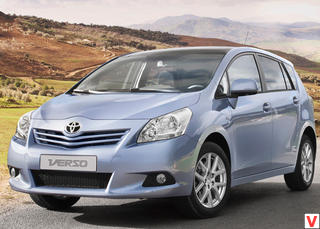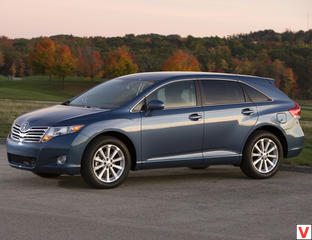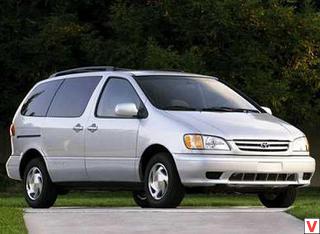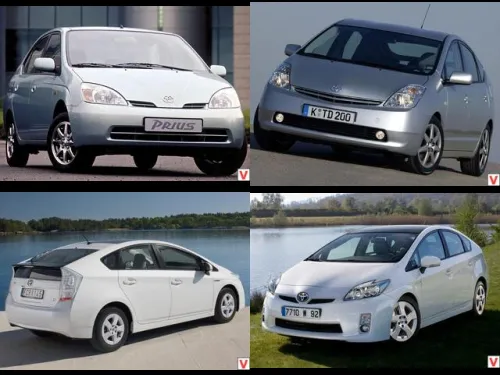
Toyota Prius - a hybrid car, which appeared on the market in 1997. Six years after the appearance of the first version of the Toyota Prius, the company decided to release a new version of this model. The second-generation Prius, barely appeared, won four prestigious awards in the USA at once, including the best car of 2004 in North America.
In the design of hybrids, there are two approaches - sequential (the engine works exclusively for charging the battery, and the electric motor is responsible for the movement of the car) and parallel (the machine is driven by one of the power units, depending on the situation). As practice has shown the operation of the first Prius, the best option - the combination of both approaches. The second Prius remained faithful to this principle. Apparently, therefore, the power plant of the car is called the Toyota Hybrid Synergy Drive. Aggate includes a 1.5-liter gasoline engine with 78 hp and a 68-hp electromotor outstanding moment - 400 Nm. The whole installation develops: 113 hp and 478 Nm.
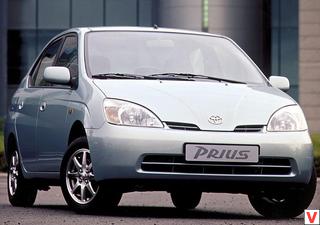
By the way, the gasoline engine of this car in terms of emission of harmful substances significantly outstripped the last EURO IV standard - the CO2 emission in the combined cycle is only 104 g / km. Also, it should be noted Toyota Prius is quite economical. In the urban cycle, fuel consumption is 8 liters per 100 km, and 5.5 liters per 100 km on high-speed highways. Hybrid Sinergy Drive has four main modes of operation. When starting off at low speeds, the engine is turned off - the electric motor powered by the battery drives the car. As soon as the speed increases, the gasoline engine wakes up (the battery rests).
Some of its power is transmitted to the wheels mechanically, and another generator converts it into electricity and gives it to the electric motor (there is no transmission and the accelerator pedal always controls the electrical part of the installation). With active acceleration uses the energy of a gasoline engine and battery. But with a uniform movement, as well as during braking, the gasoline engine silences again, and the traction motor becomes a generator and charges the battery.
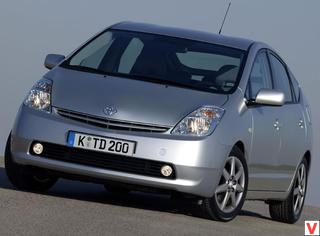
This happens both on electric locomotives, which also brake recuperatively, giving energy to the contact network. The Prius II has a lot of electronics. Needless to say, ABS, EBD and VSC of the second generation, controlling the operation of the electric power steering. The electric drive of the air conditioner, which allows to save energy, which is not scattered in this car, and universal control by wire: electronic brakes and accelerator pedal. Perhaps it was the lack of mechanical drives that helped designers create an original image. Having matured and moved from the golf class to the “D” segment, the Prius is now unconditionally mono-volume.
This is not a sedan, but a practical hatchback with the features of a mini-van. Yes, and it looks quite futuristic, unlike the example of which became “Central European” Corolla and Avensis. However, it would be strange if the philosophy of the car is not reflected in its appearance. The appearance of the car does not make a big impression. However, if you do not pursue beauty, but prefer comfort, then you will surely enjoy the new car. Seats Toyota Prius are very comfortable and meet the high requirements of ergonomics.
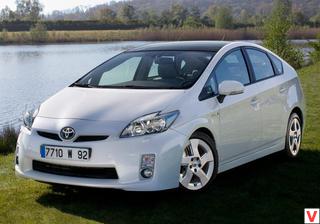
The interior of the car is very bright and spacious. A pretty dashboard deserves praise, and in the center of the console you will find an on-board computer LCD monitor with a diameter of 14.5 cm. Looking at it you can get information about the condition of the car and the road surface, you can also use it to monitor the audio system. If you touch the “Energy” label with your finger, you can get complete information about the power flow between the engine, wheels and the battery. Touching the inscription “Consumption”, you will find out how much fuel is left in the gas tank and how many kilometers it will be enough, as well as the mileage traveled for the trip.
And this information is updated every 5 minutes. The monitor also serves as a visual map of the DVD-based navigation system. The main advantage of navigation systems with an LCD screen is that they are easy to use, unlike systems with push-button controls.
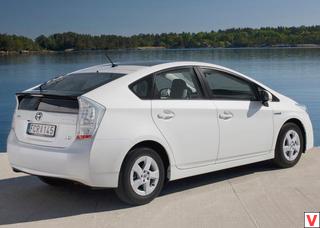
In 2009, 12 years after the debut of the model, Toyota introduced the third generation. The second-generation Prius provided the car with worldwide recognition, and during the creation of the successor to the legend, designers faced a difficult task: to preserve the identity of the image, but at the same time to bring something new into it. Compared with the second generation, the length of the car increased by only 15 mm, and the width - by 20 mm, the height of the body and the length of the wheelbase remained the same. The front and rear lights are now as if connected by a light stroke passing through the entire side of the body.
This detail added spice to the shape of the Prius, especially soft and smooth. Another difference from the previous model: the highest point of the roof is shifted to the center of the cabin (it used to be directly above the heads of the driver and front passenger). Thanks to this, comfort was added in the placement of rear passengers - now, with a height of 170 cm, here you can not be afraid to hit your head. The backs of the front seats became 30 mm thinner, which also added space for the knees. The shift knob moved to the center console raised above the floor (it used to be located on the dashboard).
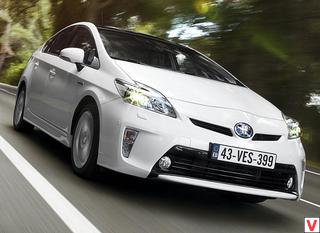
Depending on the configuration, the car is equipped with 15 - or 17-inch wheels. Another difference is the small protrusions in the front bumper. This is not so much a design element as a functional nuance; this is done to better control the air flow. Third-generation Prius Coefficient Cx = 0.25, which is 0.01 less than the Prius II. The brand name changed from NHW20 to ZVW30. This reflects the fact that the 1.8-liter Z-series came to replace the 1.5-liter N-series engine.
A larger engine was used to reduce fuel consumption at high speeds. The electric motor is equipped with a planetary gear. The system is complemented by an electronic oil pump and a unique exhaust heat recovery system. In general, the configuration remains the same.
In addition to the “EV Mode” mode (driving exclusively on electric power), the new model received two more: “ECO Mode” (economy mode) and “Power Mode” (for dynamic driving). In the usual style of driving, with stops and rises, the fuel consumption sensor on the car is 4 liters per 100 km. In eco mode, you can reach an incredible level - 1.75 liters per 100 km.
The premiere of the restyled version of the third generation model was held in Frankfurt in 2011. To slightly refresh the exterior of the Prius, the designers redrawed the front bumper, head optics with LED sections, and also increased the air intake opening. The interior has been updated with the finishing materials, the layout of some of the elements has changed, but the biggest innovation was the screen of the multimedia system Touch & Go Plus in the central panel. In addition, the Japanese have worked on noise insulation. By upgrading the chassis, engineers reconfigured the suspension, making it harder.
The Toyota Prius is driven by a Hybrid Synergy Drive powerplant consisting of a 1.8-liter petrol “four” with a capacity of 99 liters. from. and 82-horsepower electric motor. In the combined cycle, the car consumes only 3.9 liters of fuel per 100 km of track, using the ECVT variator with planetary gear as a transmission. Hatchback, among other things, is able to move exclusively on electric, however, the power reserve in this mode is only 2-3 km at a speed not exceeding 50 km / hour.
